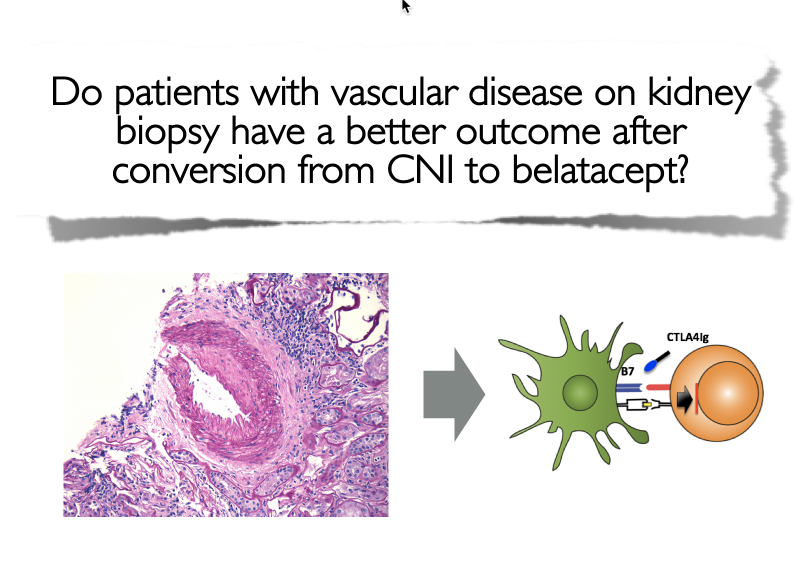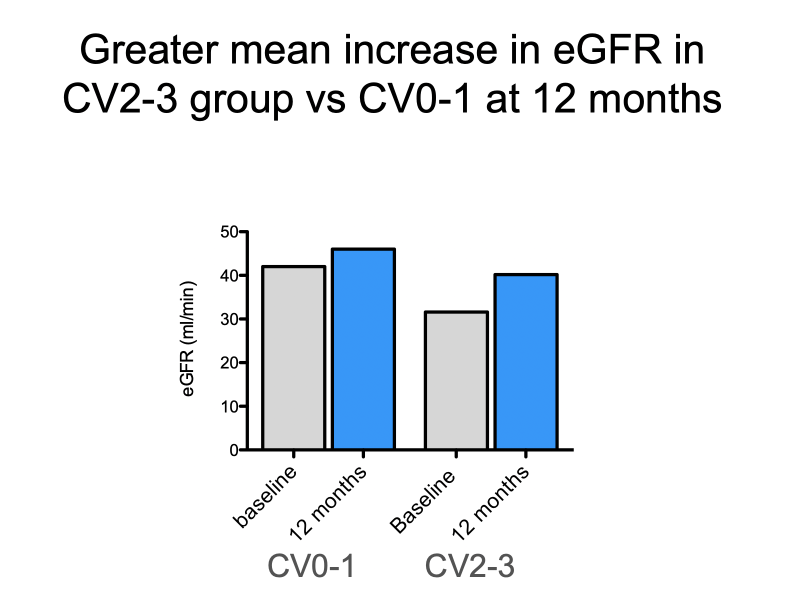Clinical Kidney Journal, 2018, ePub, ahead of print, https://doi.org/10.1093/ckj/sfy115
Authors:
Maria Jose Perez-Saez, Bryant Yu, Audrey Uffing, Naoka Murakami, Thiago J Borges, Jamil Azzi, Sandra El Haji, Steve Gabardi, Leonardo V Riella
Abstract:
Conversion from tacrolimus to belatacept has been shown to be beneficial for an increasing number of kidney transplant (KT) patients. Predicting factors for favorable outcomes are still unknown. We aimed to investigate whether histological vascular lesions at the time of conversion might correlate with greater improvement in renal function post-conversion.
The study was conducted on a retrospective cohort of 34 KT patients converted from tacrolimus to belatacept. All patients underwent an allograft biopsy prior to conversion. We analyzed the evolution of the estimated glomerular filtration rate (eGFR) at 3 and 12 months after conversion.
Median time to conversion was 6 (2–37.2) months post-transplant. About 52.9% of patients had moderate-to-severe chronic vascular lesions (cv2–3). We observed an increase in eGFR in the whole cohort from 35.4 to 41 mL/min/1.73 m2 at 3 months (P = 0.032) and 43.7 at 12 months (P = 0.013). Nine patients experienced acute rejection post-conversion, with one graft loss observed beyond the first year after conversion. Patients with cv2–3 had significant improvement in eGFR at 12 months (+8.6 mL/min/1.73 m2; 31.6 to 40.2 mL/min/1.73 m2; P = 0.047) compared with those without these lesions (+6.8 mL/min/1.73 m2; 40.9 to 47.7 mL/min/1.73 m2; P = 0.148).
Conversion from tacrolimus to belatacept has a beneficial effect in terms of renal function in KT patients. This benefit might be more significant in patients with cv in the biopsy.
Figure1.


